Torment: Tides of Numenera – the alpha version reveals a hardcore RPG with great potential
Tides of Numenera, the spiritual successor to the iconic Planescape, shows great promise. We can’t wait to share our first impressions from an early version of the game containing the basic gameplay elements.
- A classic, content-rich cRPG played from an isometric view;
- Numerous dialogues and choices influencing the course of the game;
- Turn-based combat system;
- Fixes to the game based on players' suggestions.
Although it takes quite an effort to refresh a classic, studio inXile Entertainment might prove successful in this task. And it's not just about the technical matters. Above all, it’s about the skillful resurrection of a brand well-respected by RPG vets and unknown to the new generation of gamers, which at one point won the hearts of fans of the genre. After spending several hours with the early alpha of the new Torment I can say with satisfaction that the team led by Brian Fargo knows what they're doing, and Tides of Numenera is likely to turn out an excellent, concise production, as well as another (following Pillars of Eternity, Wasteland 2 or Shadowrun: Hong Kong) testimony to the effectiveness of Kickstarter-based cooperation between players and creators.
The fall
The tested version has been divided into three segments that demonstrate the various aspects of the game. First, we become familiar with the way the story is presented and its interface; during the free fall of our protagonist through a vast chasm we receive literary descriptions of the thoughts that swarm though his head, and emotions that he experiences while getting closer to the ground. A narrator also appears, reading these descriptions; his voice will accompany some of the sequences in the final version of the game. What's more, all of the main characters can speak, though we shouldn’t expect full voice acting, as it would be too costly. Such a move leads to a situation where audible dialogues are accompanied by silent descriptions that appear only in a text box. This field also includes – as in the case of Planescape or any other classic RPG – the options enabling us to choose an action or the words of our hero. However, this standard approach doesn't try too hard to be old-school – above all, it stems from the very nature of the game. In Tides of Numenera every choice is summed up by a description of its effect; it also opens new paths for future developments. The authors – constantly referring to the new Torment as an "RPG renaissance" – intend to make every effort to seamlessly intertwine the narrative with the plot, creating a cohesive, mature and absorbing story. In order to do this, they put emphasis mostly on the vastness of the story – not only in terms of its content, but also the consequences that even seemingly insignificant choices entail.
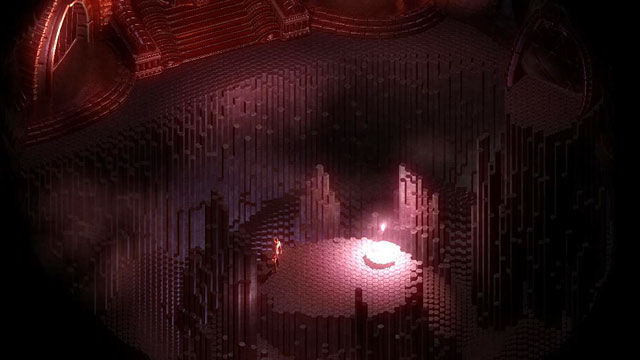

Planescape: Torment is one of the highest rated role-playing games of all time. The production has gained incredible popularity thanks to the well-developed story full of memorable characters and elaborate dialogues as well as the unique creation of the world. It was based on the Planescape universe, a part of the tabletop RPG Dungeons & Dragons. In the case of its successor, due to the lack of rights to the Planescape brand, the story is set in the world created by Monte Cook – Numenera. Changing the setting doesn't mean a change of concept, as Tides of Numenera seeks to repeat the success of its predecessor, dressing the old, proven solutions in slightly revamped robes.
After the fall comes a time for initial exploration. Although we don't remember who – or where – we are, the unidentified voices whispering about suggest suspension in a kind of metaphysical limbo. Not much can be done except from springing into action. By using one of the three attributes, the so-called Stat Pools that include Might, Speed, and Intellect, we gain access to a part of our memories. The game interface is very intuitive and allows us to understand instantly what will the interactive sequences be based on – the aforementioned attributes allow for the execution of individual actions. Depending on the level of a given skill, an action can succeed or not, in the latter case only somewhat improving the general statistics of the hero. Still, the introductory sequence is quite poor – since it’s intended to show the overall atmosphere, the moments in which the nameless hero (also known as the Last Castoff) rediscovers the various corners of his memory serve as means of highlighting the mystical aspect of the adventure.
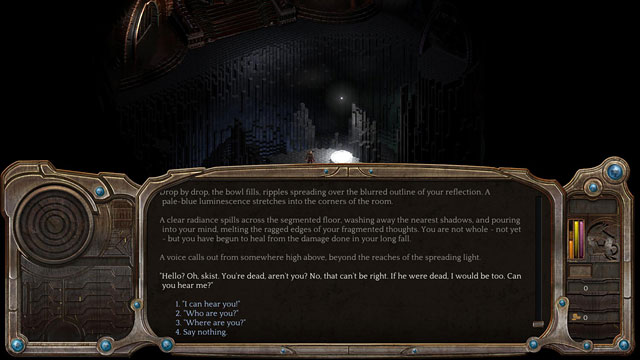
The appropriate interpretation of individual memories is provided by a wide range of options that allow – in addition to helping gain a better understanding of the content of flashbacks – to take action that influences the course of a given situation. This system emphasizes the "literary" character of the production that the developers praise (or – depending on your perspective – torment us with) in all promotional materials. The beginning symbolically announces the direction in which the production will follow – we should prepare for walls of text, heavy atmosphere, the importance of the choices made and, above all, a story shrouded in mystery, set in a mystifying and fascinating world.
The Awakening
The second sequence is a direct consequence of the fall – the hero wakes up in a small chamber, where he finds his two companions and a sarcophagus broken by his body. Initially, the image brings to mind the first few minutes of the old Torment – the game also prompts us immediately to take a look around and talk to our comrades. Exploration and interaction are in fact the essence of Tides of Numenera, seamlessly weaving the elements of mechanics into the story. Although the two locations presented in this segment (outside the chamber we can also visit the fantastical "vestibule" surrounding it) fail to impress with their size, their design promises a treat for the fans of immersion into a game’s atmosphere by getting to know the place where the story is set. We can take a closer look at almost every decorative detail in the world – and almost each of them enables interaction. "Useless" elements of the landscape have been accompanied by short descriptions that expand a little bit the knowledge about the environment surrounding the hero.
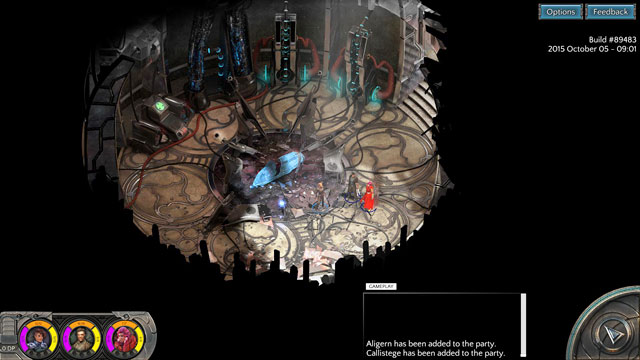
Interactive objects or phenomena act exactly like NPCs – nothing stops us from initiating a conversation with them, hear what they have to say, or force a response to our action. For this purpose, we can use the three aforementioned kinds of skills, selecting an appropriate degree of a given skill (depending on how much we want to increase the probability of success of the action taken) and checking whether this leads to a desired effect. Most of the actions are usually commented upon by one of our companions, in one fell swoop revealing their character, expanding the story-related aspect of the assignment and suggesting alternative approaches.
The mechanics can be well illustrated by a situation from the test version of the game in which the protagonist – by using an appropriate skill – pulls out a valuable object from the mud. While delighted by this discovery, his companions insist on continuing the journey. However, if we get stubborn at this point and repeatedly choose an option ordering the protagonist to remain by the mud in anticipation of another item "appearing" there, this will finally happen (what’s more, the object will be useful later in the game), stunning the companions even more. Polishing and developing all the side interactions to such an extent would make Tides of Numenera an extremely complex experience, setting it on par with Planescape – or even surpassing it – in terms of content. And if we choose to believe the developers’ assurances, that's exactly what they want to accomplish.
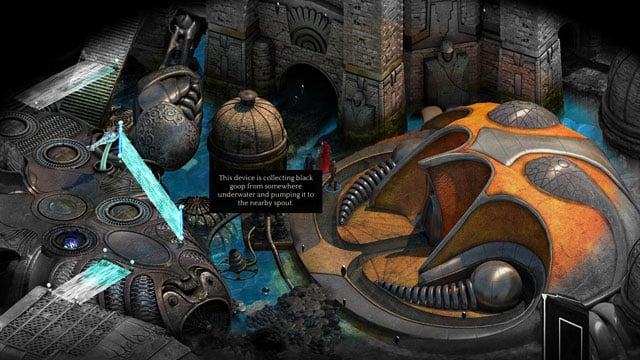
The spirit of the good old Torment can be seen in different areas as well – for instance, Tides of Numenera uses a very classic perspective (isometric view), placing three-dimensional characters in a two-dimensional, prerendered environment. The artistic direction chosen by the designers merges a fantasy world with elements of dirty steampunk; in the test version it was well-presented. Several fragments of gameplay featured both elements balancing each other (though fantasy remained the domain of the story-based aspect). The developers want to build the setting in a creative way – there will therefore be no shortage of phenomena that violate the laws of physics, complex mechanical structures, claustrophobic caves full of danger, or disturbing mazes. The current richness of the world gives hope for seeing larger levels full of even more interesting buildings, decorations and landscapes in the future (the studio seeks to provide an enormous universe to the players). The only thing I found annoying is the poor saturation of colors – the locations lack a color "theme", and so do the elements of interface, making it feel more simplistic and bizarre than it actually is.
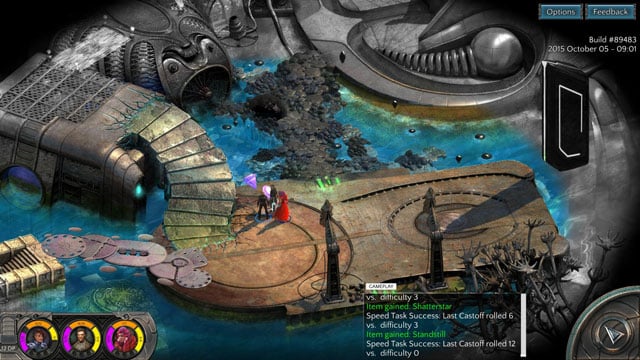
The action
The last segment allows us to test the Crisis system which is a completely new (as compared to Planescape) element closely related to combat. According to the developers from inXile, the Crises bring in the spirit of pen and paper RPGs to their production, letting the players control the action with a freedom reminiscent of the way a "real" game masters issue commands. In practice, this means resolving conflicts with an opponent by combat or without bloodshed (it will be possible to complete the game without killing anyone). What’s more, starting a confrontation is not tantamount to choosing a road of no return. During the skirmish itself we can ease the conflict and even end it by relevant rhetorical tricks (enemies have no intention to abstain from the conversation – even if a few seconds earlier they tried to gut us). Building the fighting mechanics in such a manner is to give the player full control of the situation and let them deal with any "problems" in a total compliance with their vision. Although the tested alpha game blocked the option of choosing a bloodless alternative to a hostile confrontation (in order to showcase the combat system as such), the appropriate course of "conversation" with enemies ended with the player gaining information that the final version will feature a pacifist approach as well.
We deal with our opponents in a turn-based system. The alpha version of the new Torment provides only the basic functionalities, such as using the surrounding elements in our favor, launching basic attacks, using passive skills and attempting to resolve a conflict peacefully.
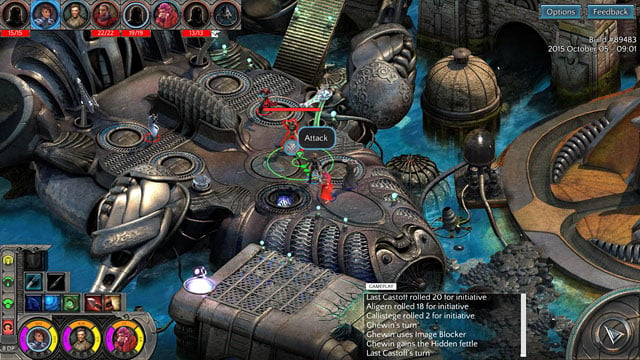
The first of these actions is based on the same principle as the interaction with the environment outside of combat. Activating an appropriate skill (provided it’s on a sufficient level or that we use Discovery Points, i.e. points awarded for the performance of side quests, ensuring the success of any contextual action) allows us to produce the desired effect. In this case, it was possible e.g. to gain control of a deadly dust thrower. This expands the tactical aspect of the game, which is also emphasized by two types of abilities – Anoetic (enabling immediate activation of simple skills or a change of weapon sets) and Occultic (i.e. a standard motion, like changing place, attacking, casting spells, etc.). Their combinations make up the course of combat in its broader meaning (turn by turn we can test different strategies, specify the context of attacks or use special skills – both ours and our companions'), and the use of individual skills consumes the corresponding attributes present in the Stat Pool.
It is worth noting that in the current version the skirmishes are not as dynamic and thought out as the team from inXile would surely like them to be. They lack the flair and precision that characterize, e.g., the Shadowrun series, which certainly would become less of a problem upon implementing cosmetic improvements to the interface and amending the way commands are issued to the heroes. Still, the combat has the potential to become another great asset of the production.
The Tides of Numenera will include a Waves system, i.e. a set of several specific personality traits of the Castoff, represented by colors (blue, red, indigo, gold and silver). Each Wave is to characterize the actions of the hero, specifying what kind of "legacy" they will build through their behavior and what it says about them. The Waves will then influence the way the protagonist is seen by side characters, which may affect the shape and course of the various Crises and other tasks. The developers point out, however, that the Waves should not be equated with a moral system – instead of good and evil they represent virtues and universal qualities such as wisdom or justice.
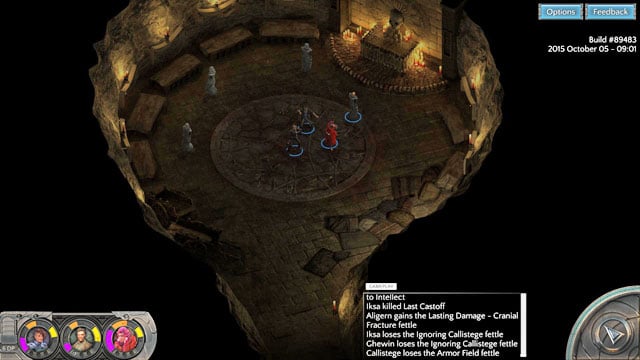
Immortality of hope
An early version of the upcoming Torment has showcased many of its assets, but it's yet to reveal even more. I didn't have an opportunity to see the character creation, the impact of the protagonist's statistics on gameplay, the system of awarding experience points, management of items or economics. In terms of the above topics we will have to put our faith in the developers and hope that it all works out. So far, Brian Fargo's team has consistently introduced amendments suggested by the players who are associated with the project (or should we say – support it financially), which emphasizes the matter of co-creation of the title by the community gathered around it. This version was able to skillfully showcase the potential of Planescape's successor and confirmed that Torment: Tides of Numenera has a chance to count in the RPG world and wants to do it, perhaps even managing to pique the interest of players who don't remember the times of isometric view. And the old vets? They have nothing to worry about.